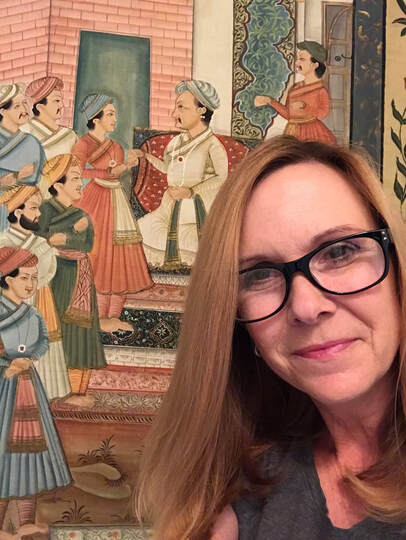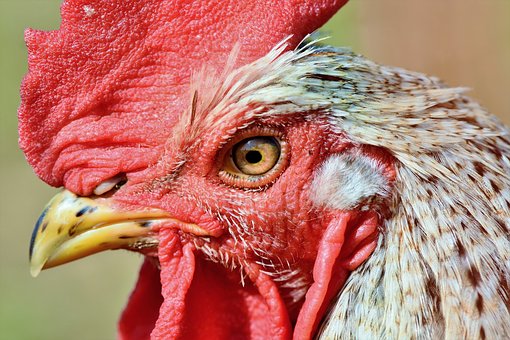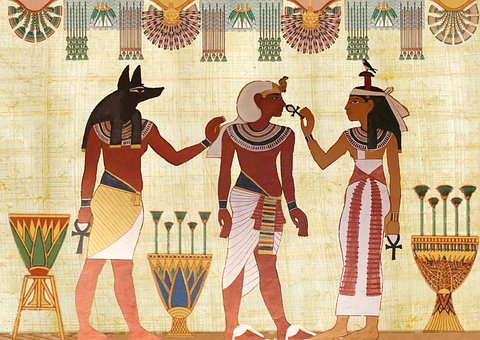Archived Blogs
|
I've been busy. Not just a little busy. More like hustling to keep my task list from pouring down over me like a tsunami. Slaving to pull myself out of this swamp of duties. You get the idea.
So I've backed off of the blog. Sorry about that! But what I haven't stopped doing is writing about a new story centered in India. This tale has been swirling in my head for some time and it has more than a fair bit of monsters, mythology and magic. It goes without saying, there will be unicorns, too. It won't be just one book. Nope. Pack your bags. We might be gone for awhile and I can already tell that India won't be our only destination... As penance for my lapse in blogs, I'm giving you a taste of what's coming next: Chapter One Augustus Hithersby adjusted his notes and looked over his reading glasses at the audience before him. “The Roman author, naturalist and philosopher, Pliny the Elder was probably actually describing a rhinoceros when he said that the unicorn had ‘the feet of an elephant’ and ‘the tail of a boar.’ He described the horn as black, instead of the more common white color demonstrated in most art works. Pliny, you’ll remember, wrote the Naturalis Historia, the model for later encyclopedias. He was an investigator of botany, zoology, astronomy, and geology, so his writing has credibility. But while Pliny and the rest of the Romans reference unicorns in their literature, it’s not likely the same creature we think of in modern times.” Augustus clicked the remote and a slide appeared overhead with a rhinoceros on the left and a unicorn on the right. “What about the Greeks? Multiple accounts of the animal were found in their study of natural history. Do you know where they believe the unicorns originated from? I’ll give you a hint…It’s the final stop on my speaking tour.” Augustus smiled when a young woman in the second row called out the answer. “India! That’s right. India was regarded as a land of magic and the unicorn was considered a mysterious creature that commanded respect.” Augustus took a sip of water and winked at his wife in the front row. She’d always been constant fixture in his lectures, sometimes the only occupied seat in the auditorium. Octavia smiled back at him with a sparkle in her eyes. Her face might have a few more lines and her hair might have a hint of silver—wisdom locks she’d informed her husband—but she was the best wife and research assistant that a man could hope for. “Does anyone know what makes unicorns different from any other mythological creature? Anyone?” He paused theatrically, adding suspense, he hoped, to his presentation. “There’s no myth associated with the unicorns. None. There are stories about centaurs and winged horses, minotaurs and Medussas, but no stories centered around unicorns. Just like there are no myths about rhinoceros or elephants. Various cultures around the world describe the unicorn as if they’re describing any other animal that walked the earth. It’s clear, they considered the unicorn a real beast.” “But a beast with an important difference. In all civilizations, and all time periods, the unicorn was both revered and respected. A symbol of purity and goodness.” Augustus raised one brow and tapped his finger on the podium for added emphasis. “So the questions remain…Were they real? Could they have actually existed?” “I’ll take a few questions and then I’ll have to go.” A man in the back stood up, but Augustus was quick to stop the man when he started talking. Putting a cupped hand by his ear he said, “Louder, please. My wife claims that I forget what she says, but I suspect that I don’t always hear the dear woman.” Augustus scratched his beard as the man posed his question and then he sorted through computer files until he found what he was looking for. “Ah, yes. There is a theory that those pictorial representations only show one horn because we’re seeing a side profile. That the closer horn obscures the second horn. Let’s take a look at an example of that.” A plaster relief of a unicorn appeared on the wall. “Here,” he demonstrated with a pointer. “Look at the detail of the billowing mane on this Roman etching. Two front legs. One horn.” He squinted, studying his own slide for a second, before clicking to the next image. “French tapestry from around 1500 AD. We can see the profile of the body, but the head…see how it’s turned to look at the viewer. One horn.The craft of both of these pieces goes against the argument that the artist did not incorporate a second horn.These have dimension, they are not simply flat pieces of art. Presumably, like the legs in the first example, the artist could have included a second horn if one existed.” He acknowledged the woman with the note pad when she stood up next. “Thank you, madam, for speaking up so that I could hear you.” He flashed a mock stern expression at his wife. “Do you see how well that works when a person speaks loud enough so that they can be heard?” “The argument about the unicorn being a composite of other animals is a common theory, but it’s got one rather large flaw.” Augustus caught himself staring over the rows of faces, still finding it hard to believe so many people were interested in his research. The sound of his wife clearing her throat brought him back to his subject. “There were no horses or camels in the Indus Valley so what could that composite be based on? By the way, the Indus valley is what we now refer to as the modern countries of Pakistan, Afghanistan and a large part of India. Excavations of the Indus Valley have been primarily in Harappa, a small town in the Punjab province of India. The site is thought to be 8,000 years old—older than the Egyptian sites that we’ve uncovered thus far.” “What did they find there? Great question. Fascinating stuff.” Augustus brought up another slide. “This. It’s a unicorn seal that’s currently in the museum in Karachi.” He switched to another image, his voice growing more and more animated. “Here’s another…and another. Harappa is the hot spot for unicorn research right now. When he switched his attention away from his own slides and back to his audience, he saw that his wife was waving to get his attention. “Ah, it looks like my time is up. My wife is pointing at her watch and giving me that universal ‘look’ that all husbands around the world recognize. I’m a smart man and I’m going to prove it by stopping now. If you’re interested you can read ‘The Harrappan Unicorn in Eurasian and South Asian Perspectives’. You can find the article in Current studies of Indus Civilization. Should be easy to find. Thank you again for your kind attention.” Chapter Two “Do you have your bag? This might take a bit of time.” Augustus patiently stood by the door of their hotel room waiting for his wife to gather her things. “You can always go shopping if you’d like instead. I know this must be dreadfully boring. It’s just important for me to be prepared before the last big lecture.” Octavia pointed to the bag already hanging from her shoulder and then finished fastening her earring. “You know I like to pick my seat in advance.” she teased. “I’m going to have to start fighting off your groupies if I want to be anywhere near you.” “There’s not much in here.” Augustus peered in her bag before slinging it over his own shoulder. “You sure you have everything?” “I don’t need much. Water bottle. A few books to read. Yarn.” Augustus rolled his eyes. Knitting was his wife’s latest preoccupation. Fortunately, her failure was so spectacular that she’d yet to finish an entire row. So he’d didn’t have to worry about disappointing her by not wearing the sweater she’d planned. In the meantime, he’d been jabbed more than a few times by the needles she’d left laying around the house. “I’m not sure we’re going to have that much time…maybe you want to leave the yarn here?” “Muggle.” He shook his head this time. She’d recently been on a chat room for knitters and discovered that a non-knitter was referred to as a muggle. She thought the term outrageously funny and had been referring to him like that ever since. Please let this obsession end soon. She pushed the elevator button before he had a chance. “Do you have your list?” He waited while she walked through the open doors. “Don’t need it.” The door closed and the elevator started its descent. “By now, I’ve got everything memorized.” “Podium. Screen. Electricity…” “I remember. My laptop is fully charged but we’ll check and see where the nearest plug is too. Just in case.” “And let’s make sure that someone can help in case…” “We have a temperature problem in the auditorium. He put his hand on her back and guided her out to the lobby. “You almost froze in Italy. What was that thermostat on anyway? By the time I finished by lecture, I could swear that everyone’s lips were blue.” “That reminds me. I’ll pack a sweater in my bag for tomorrow. Just in case.” “The National Museum, please.” Augustus waited till his wife got into the car and then slid in next to her. “Visiting, Sir?” the driver asked. “Preparing for a lecture tomorrow,” his wife answered. “He’s been invited as a special guest speaker.” Augustus hid his smile at the obvious pride in her voice. It was only recently that unicorns had become a serious topic of interest and not simply a child’s toy. “Very good. I’ll have you there in no time.” It wasn’t long before the car pulled up in front of a curved tan building with gold letters announcing the National Museum. Red steps, divided by round columns, led to the front doors. Augustus helped his wife out of the car before pulling out his wallet to pay the driver, but the man waved the money away and slid back into the car. Augustus still held the money in his hands as the driver pulled away. “Did you notice his eyes?” Octavia asked. “What? Wonder why he didn’t take any money. Eyes? Now that you mention it…” “Startling blue, weren’t they?” Octavia turned when his hand directed her toward the steps. They’d only climbed a few when Augustus heard his name. “Professor Hithersby?” He thought about ignoring the voice. He had an agenda this morning and it was important to make sure everything ran smoothly tomorrow. But his wife didn’t seem to agree. “Augustus, that man is trying to get your attention.” The stranger came to a stop beside them. “I was right? You are Professor Hithersby?” “That’s correct. What can I help you with? I’m afraid I don’t have a lot of time.” From the looks of the man, he was likely another wanna-be archeology student. He was younger than one would think of a university student, wore a faded tee-shirt over jeans, and spoke with an accent that implied he was a local. “A thousand pardons, but I wonder if I might disturb you for a moment to examine a few photographs? I’ve been sent this by my brother and I’d like your opinion. He found this at a market and purchased it and we both think that it’s possibly from the region of…” The photograph was of a golden deer and the workmanship was exceptional. There were several different view points, some close-ups of the detail of the twin horns that flowed over the length of the animal’s body. “Where did you say your brother found this?” The artifact was stunning, but also familiar. Something tugged at the back his mind. “A market outside the city.” Augustus held the photograph a little further away and then used his opposite hand to search his pockets for his glasses. He glanced to the left, where his wife stood a moment ago, but she was gone. She usually carried his spare pair in her purse and he squinted at the photograph trying to make out the details. So familiar. His fingers touched the familiar lens of his glasses just as he was about to call out his wife’s name. Must be exploring the statuary on the sides of the building. It wasn’t unusual for Augustus to get called away from his wife’s side and she’d gotten quite good entertaining herself. The image came into sharp focus once his glasses were in place. “This isn’t from India.” He tapped the photograph with his finger. “I’ve seen this somewhere….” This time he spun and called out for his wife. “Octavia, come look at this photograph, would you?” It was when he looked down again at the golden deer that he knew. “The golden deer of Zhalauly, that’s what this is,” he said with satisfaction. “Zhalauly is in Kazakhstan.” When he looked up, he expected the man to look disappointed, but instead he was looking somewhere past Augustus. And he looked pleased. “Interesting story. A bunch of children found a felt sack lying on the side of the road, presumably brought in by snowmelt waters. Inside…golden treasures like this.” He was in the act of returning the photograph when something dawned on him. He held the photograph up again and examined it closer. This was no random photo taken by someone who had an interesting find at a market. This was a professional shot. The black background, the reflection of the light on the gold, it looked like Oleg’s work. There. In the corner of the shot, it looked like the characteristic… “Look here, sweetheart, doesn’t this look like Oleg’s work?” He called out louder since she didn’t hear him last time, but she still didn’t appear. It was closer to the time when the museum would open and more and more people were milling around the stairs, waiting to enter the building. He spun around, feeling a tightness in his chest. “Octavia!” he called out, anxiety making his voice a little higher in pitch. “Did you happened to see where my wife…” When he turned around, he only caught a glimpse of the young man’s back as he faded into the crowd. Augustus Hithersby was alone and his wife was no where to be found. If you're interested, stay tuned. Or better yet, sign up for my newsletter to get updates on upcoming books HERE.
0 Comments
Not long ago, I read about Maurice the Rooster.
He lives in Saint Pierre D’Oleron in France and he’s caused quite the uproar. Vacationers, renting a home near Maurice, were disturbed by his morning vocalizations and wanted it stopped. So they took him to court. Stopping a rooster from crowing is not an easy task to accomplish as it turns out. Researchers in Nagoya University of Japan discovered that roosters don’t need light cues to start making noise. They kept the roosters in dim light and despite the lack of changing brightness—roosters still crowed on 23.8 hour cycles. (Current Biology March 18). Putting Clarice in an unlit shed wouldn’t do the trick. Aside from an understanding of the circadian rhythms of roosters, it brought up the problem of intolerance. Which, by definition is, an unwillingness to accept views, beliefs or behaviors different from your own. Picking the countryside to vacation and being intolerant of the very creatures that define a countryside is a problem to me. It took two years in the courtroom, but Maurice eventually won the right to crow. There’s more to intolerance than I realized. Apparently Intolerance is also 1916 Silent Film directed by DW Griffen and it’s regarded as one of the great masterpieces of that era. It follows four story lines (Babylonian, Judean, Renaissance and Modern) and it demonstrates man’s persistent intolerance through time. A leading film critic of the time, Theodore Huff, called it the only motion picture worthy of standing beside great works of art like Beethoven’s 5th or Michelangelo’s Sistine Chapel. Rotten Tomatoes gave it a 97%. It sounds like something I should check out, but I’m not really fond of silent films. Hmm, does that make me intolerant? Sometimes it feels like there’s no escape from all the drama, unhappiness, and intolerance…but then I read this. In Bhutan, between India and Tibet, they’ve come up with a concept called the “Gross National Happiness Index”. As the article points out: "When we say Gross National Happiness, it is not the celebrative 'Ha ha -- Ho ho' kind of happiness that we look for in life," Lotay explained. "It only means contentment, control of your mind, control of wants in your life. Don't be jealous with others, be happy with what you have, be compassionate, be a society where you can be more than happy to share. In Bhutan, they measure happiness. It sounds a bit crazy right? They do regular surveys that pay attention to health, education, governance, ecology, time use, community vitality, living standards and psychological well-being. And they developed a clear plan to approach what they saw as deficiencies. Is it working? It sounds like it is. They produced a politically and economically stable environment, increased the life expectancy of the their residents, protected wild-life, banned tobacco and plastic bags and increased access to both healthcare and education. That’s certainly something to crow about. Did you enjoy Labor Day?
You can thank an Egyptian goddess. Ma’at is the goddess of justice, harmony and balance. She is depicted as a winged woman with an ostrich feather on her head. The white feather, also known as “the feather of truth” was used in a ceremony in the afterlife. Osiris, Lord of the underworld and Judge of the dead, would put the "heart of the soul" on a golden scale balanced against the feather of Ma’at. If the soul’s heart was lighter, they had the chance to enter paradise. If the soul’s heart was heavier, it was thrown on the ground where it was devoured by the monster Ammut. Rich or poor, pharaoh or common worker…all were measured. Compared to other goddesses, Ma’at had no temple or clergy. She was regarded more as a concept than an entity. Ma’at became a belief that one should stay in tune with concepts of justice and harmony to keep the universe in order and maintain a cosmic balance. Ma’at became the foundation of the Egyptian society. Rulers would ask her help maintaining balance and if a king was not successful in promoting harmony, it was considered a clear sign that he should not rule. This wasn’t always easy. The first labor strike occurred during the New Kingdom period in Egypt (1570-1069 BC) under the rule of Ramses III. His rule started out well, he navigated relations with foreign rulers and restored temples and monuments. But when the Sea People invaded (I did not make this up), defending the country strained the land’s resources. While they successfully dealt with the invaders, the loss of lives associated with the battle meant less labor in the fields and fewer merchants to sell goods. The economy suffered. Trouble started when the wages to tomb builders and artisans were more than a month late. Instead of looking at what was happening to these payments, officials continued in their preparation for a festival honoring Ramses. When the payments were late again, workers laid down their tools and marched to the city shouting “We are hungry!” This had never happened before, and the officials didn’t know how to handle the situation. They ordered pastries for the workers (which reminded me of Marie Antoinette’s famous line “Let them eat cake” when she was told that the peasants had no bread). They hoped that the whole situation would blow over. It didn’t. Workers were given their back pay, but when they discovered that their next payment wouldn’t be coming, the strikers blocked access to the Valley of the Dead where priests and family members offered food to dead. This was a big deal. The workers were angry, not just because they had not been paid, but because they saw this as a violation of the ma’at. The king and his officials were supposed to take care of the people and he was failing. The success of the strike inspired others to do the same and eventually laborers were recognized for the collective good that they provided to society. Now we have a holiday commemorating workers--Labor Day. What ever happened to Ramses? An article in History. com titled “Multiple Assassins involved in the brutal death of Egyptian Pharaoh” tells the end of his story…. “In this tumultuous political climate, Ramses’ secondary wife Tiye hatched an assassination plot with over a dozen fellow members of the pharaoh’s harem, along with the head of the treasury, a military captain, a butler and the chief royal chamberlain. According to ancient papyri detailing the court trial that followed, the conspirators planned on employing wax figurines and other magic to get past the royal guards, while simultaneously fomenting a rebellion throughout the kingdom.” Obviously, they were successful with that wax and magic stuff…. “…researchers using a high-powered CT scanner on Ramses’ mummy discovered a severe throat gash, covered up by an amulet thought to possess healing powers.” |
Archives
October 2020
Categories |
COPYRIGHT 2017 SUSAN BADARACCO | Site Credits




 RSS Feed
RSS Feed